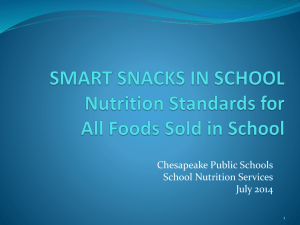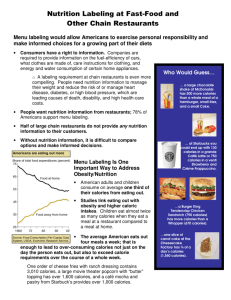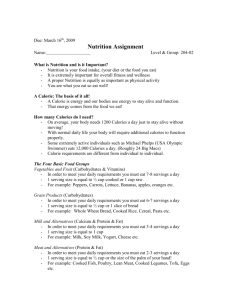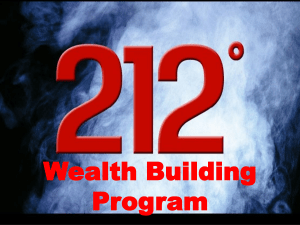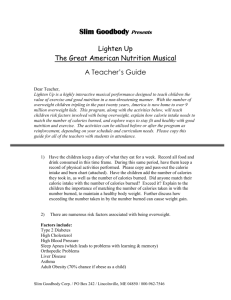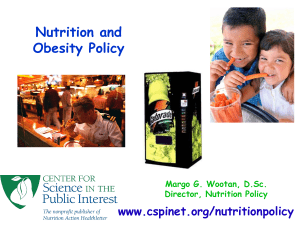Adult and Elderly Nutrition
advertisement
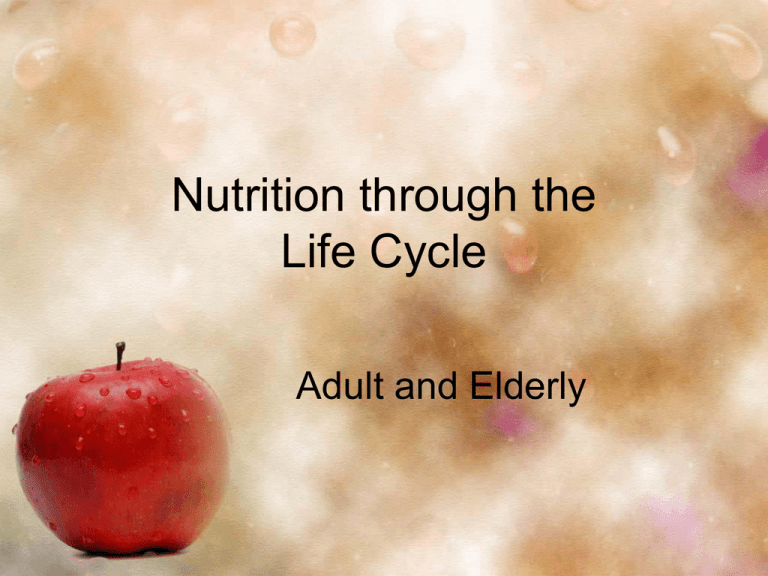
Nutrition through the Life Cycle Adult and Elderly Definition of Adulthood With good luck, good genes, and good habits, adulthood covers a life span of roughly 60 years. • Early Adulthood – by the age of 20, adults have generally stopped growing • Midlife – forties and fifties – body composition shifts, hormones shift, and activity decreases • Old Age – after sixty – consequences of earlier lifestyle choices Physiological Changes of Adulthood • Growth and maturation are complete by early adulthood • Nutritional emphasis turns to maintaining physical status, continuing to build strength, and avoiding excess weight gain • Differences between: • Males • Females Energy Needs • MyPyramid.gov • Harris-Benedict Equation • Mifflin-St.Jeor Equation Dietary Recommendations • Governmental and private groups make food and nutrition recommendations according to their missions and goals – Advocating for reduction of specific disease risk (i.e. American Heart Association) – Ensuring adequate population intake specific nutrients (i.e. FDA – fortification of grain products) – Offering guidance on what and how much to eat. (i.e. Food Guide Pyramid, Dietary Guidelines for Americans) Weight Change • 3500 calories to gain or lose 1 pound of body weight. • To gain or lose 1 pound / week add or subtract 500 calories / day • These calories can be a combination of intake and activity Healthy People 2010 • Increase the number of individuals who are: – – – – At a healthy weight Eat at least two servings of fruit/day Eat at least three servings of vegetables/d Eat at least six servings of grain products/ d (with ½ of those as whole grains) – Eat less than 10% calories from saturated fat – Eat no more than 30 % of calories from fat • • • • Meet dietary recommendation for calcium Eat 2400 mg or less of sodium daily Increase food security and in doing decrease hunger Increase number physician visits as needed Water needs • 1 ml water per calorie of food ingested • 2000 calorie diet = 2000 ml of water • Eight 8 ounce glasses of water/day Are you receiving enough water? – urine colorless or pale yellow Physical Activity Recommendations • 30 minutes a day • Intermittent physical activity also increases caloric expenditure Definition of Elderly • 65-74 years is “young old” • 75-84 years is “aged” • 85 and older is “oldest old” Diseases and disabilities are not inevitable consequences of ageing Longevity • The Center for Disease Control and Prevention suggest that longevity depends on: – 19% genetics – 10% access to health care – 20% environmental factors – 51% lifestyle factors Physiological Changes • • • • • Body composition changes Weight gain Taste and smell Chewing and swallowing Appetite and thirst Food Safety • Compromised immune systems • Under reported due to individuals thinking it is the “flu” • Causes may be: – Improper temperatures – Poor hygiene – Contaminated equipment – Inadequate cooking time Physical Activity Recommendations • On average older adults are less active • An evaluation by a physician is needed • For general health exercise 30 minutes an day on most days • Drink plenty of water • Do warm up and cool down exercises Physical Activity • Encouraging physical activity will help older adults by – Improving strength – Maintaining muscle mass – Improving activities of daily living – Feeling better both mentally and physically, which may influence changes in dietary habits. Community Food and Nutrition Programs • Governmental programs: – USDA’s Food Stamp program – Adult Day Services food programs – Nutritional Assistance Programs for seniors – Meals-on-Wheels – Senior Nutrition program of the Older Americans Act Community Food and Nutrition Programs • Non governmental home health programs provide food and nutrition services: – Nursing – Home health aides "To eat is a necessity, but to eat intelligently is an art." - La Rochefoucauld This material was funded by USDA’s Food Stamp Program through the California Department of Public Health’s Network for a Healthy California. These institutions are equal opportunity providers and employers. The Food Stamp Program provides nutrition assistance to people with low income. It can help buy nutritious foods for a better diet. For information on the Food Stamp Program, call 1-888-328-3483.



